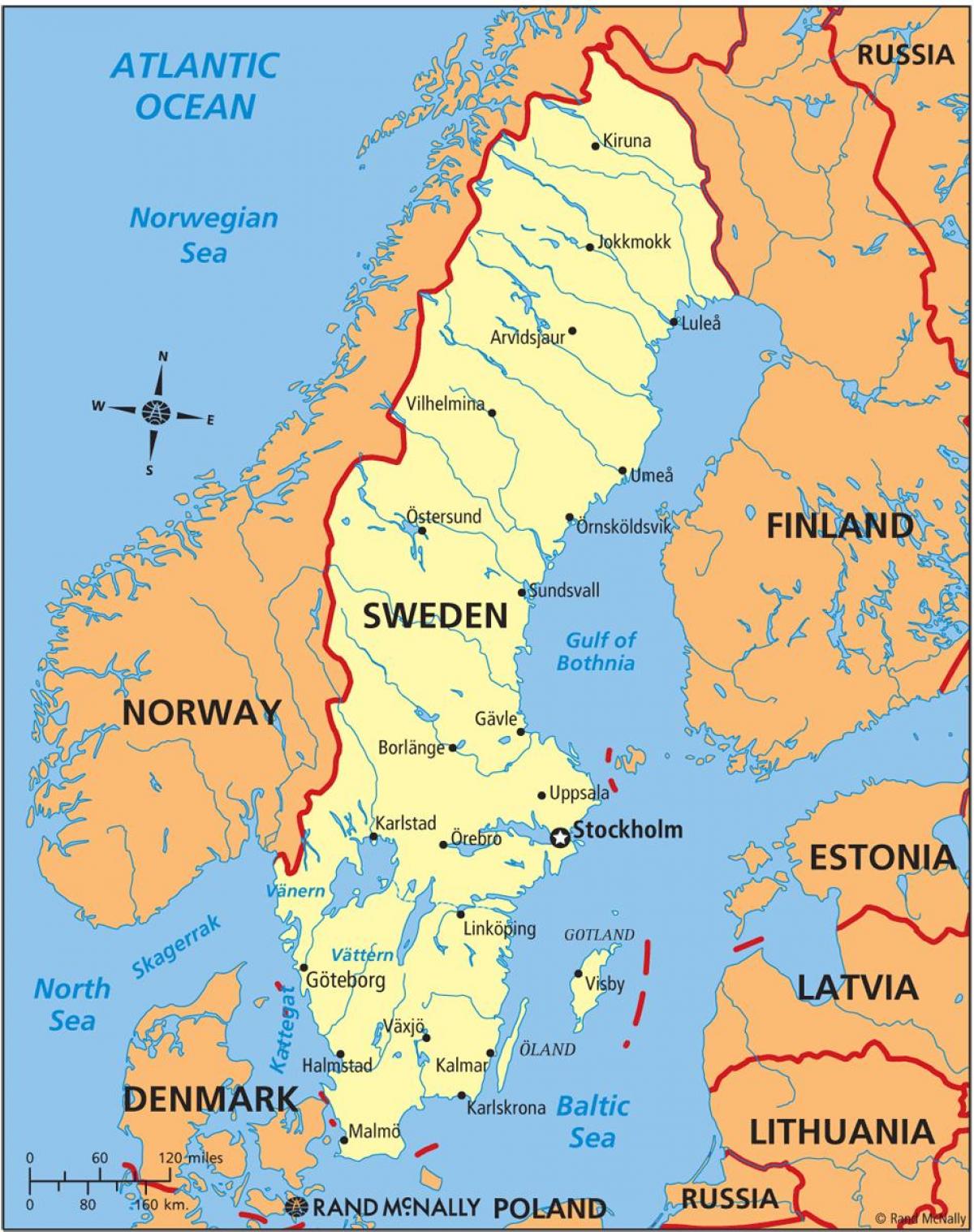search
Map of Sweden
Sweden on a map. Map of Sweden (Northern Europe - Europe) to print. Map of Sweden (Northern Europe - Europe) to download. Sweden consists of 39,960 km² of water area, constituting around 95,700 lakes as its shown in the map of Sweden. The lakes are sometimes used for water power plants, especially the large northern rivers and lakes. The two largest islands are Gotland and Öland in the southeast. They each have their own culture, most notably Gotland with the old, largely intact and heritage-filled city Visby. Much of Sweden is heavily forested, with 78% of the country being forest and woodland, while farmland constitutes only 8% of land use.
Fish is an important item in the Swedish diet, and Sweden is both a major importer of fish products and a principal supplier to other countries as its mentioned in the map of Sweden. Göteborg, Bohus, and Halland are the principal fishing districts, but large quantities of fish are caught all along the coasts. At the beginning of 2004, there were 1,597 vessels in the Swedish fishing fleet, with 1,731 professional fishermen. Herring, cod, plaice, flounder, salmon, eel, mackerel, and shellfish are the most important saltwater varieties. Freshwater fish include trout, salmon, and crayfish, a national delicacy. In 2003, there were 360 aquacultural enterprises, yielding 4,585 tons of fish. The saltwater fish catch increased from 228,000 tons in 1971 to 259,000 tons in 1984, overcoming a significant drop in the 1974–79 period because of government conservation measures and the declining number of fishermen.
Only about 3% of Sweden labor force earned their living in agriculture in 2000, compared with more than 50% at the beginning of the 20th century and about 20% in 1950 as you can see in the map of Sweden. Production exceeds domestic consumption; however, a considerable amount of food is imported. About 6.5% of the land area of Sweden, or 2,672,000 hectares (6,603,000 acres), is classed as land cultivated with permanent or temporary crops. In 2003 there were 66,780 holdings with more than two hectares (five acres) of arable land. Farm holdings are intensively tilled; fertilizers are used heavily and mechanization is increasing. During 1980–90, the agricultural sector grew by an annual average of 1.5%.
The UN estimated that 84% of the population in Sweden lived in urban areas in 2005, and that urban areas were growing at an annual rate of 0.18%. The capital city, Stockholm, had a population of 1,697,000 in that year. Göteborg had a metropolitan population of 829,000 as its shown in the map of Sweden. Other large cities (and their estimated populations) include Malmö (267,171), Uppsala (130,000), Västerås (129,987), Örebro (95,354), and Norrköping (83,000).
Christianity came to Sweden as early as the 9th century mainly as a result of an expansion in trade. The ancient Nordic religions were slowly replaced. Several centuries later all monarchs were Christian and Christianity became the established official religion. The church belonged to the international Catholic Church until 1527 when the Swedish state church was established as a Protestant church based on Lutheran principles. In 1951 legislation on religious freedom was enacted, allowing citizens to leave the state church without entering another religious community. The Swedes are primarily Scandinavians of Germanic origin. There are about 17,000 to 20,000 Sami (Lapps) within the country as its mentioned in the map of Sweden. The remaining 12% of the population is comprised of foreign-born or first-generation immigrants, including Finns in the north, Danes, Iraqis, Iranians, Norwegians, Greeks, and Turks.


